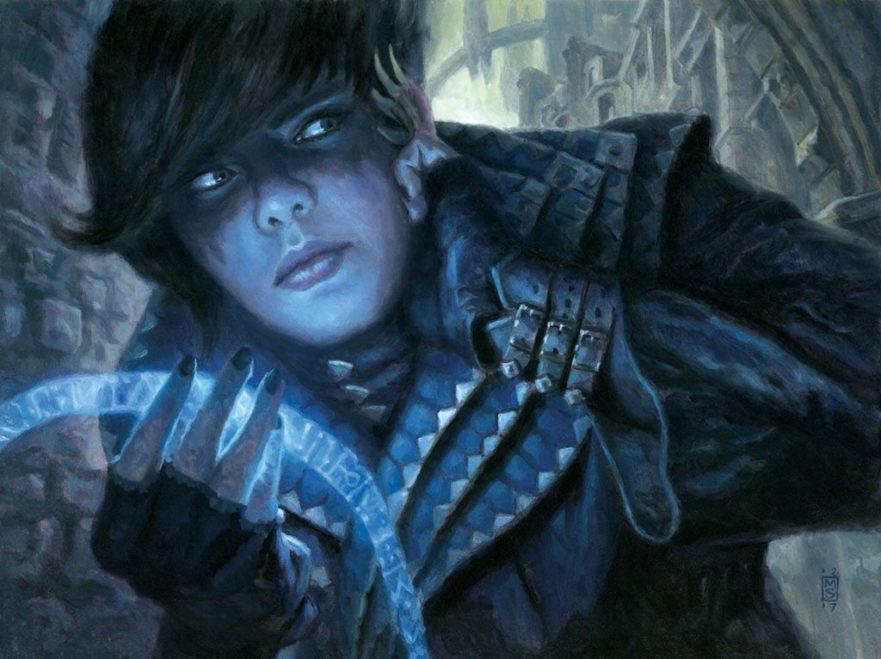In the words of L.A. Confidential author James Ellroy: “[Film Noir] is a generically American film movement that went from 1945 to 1958 and exposited one great theme. And that theme is: ‘You’re @#$ked.’” It’s a simple phrase, but what it and Film Noir succeed in conveying is the struggle to find meaning in a world that cares less about you. Born from groundbreaking directors of German Expressionism and mixed with American hard-boiled detective novels, Film Noir indulges in themes of pessimism, anxiety, and a nihilistic attitude towards morality. Given the events of the Depression through the Cold War, it was easy for the average theater-goer to become fearful of the man-made catastrophes to come, with spies and the threat of bombs seemingly everywhere.
Film Noir as a genre has consistently been associated with cities. From Casablanca to Los Angeles, this film genre feels most at home examining human behavior where the most and darkest examples can be found. As a city that encompasses an entire world, Ravnica becomes a perfect in-universe setting for a Film Noir, especially given the upcoming War of the Spark.
It’s no surprise that the art direction for both Guilds of Ravnica and Ravnica Allegiance has taken a healthy chunk of inspiration from the film genre. From lighting to setting, illusion to costume, these sets give us the grey moodiness that Film Noir has always embodied, but with a uniquely Magic twist.
Cloudy Streets – The Atmosphere of Ravnica
One of the biggest themes Film Noir explores is uncertainty, both within the physical world and the psychological one. In many cases, that uncertainty takes a physical form: the cool, grey cloudiness of fog. In movies like “Casablanca” and “The Maltese Falcon,” fog is used to obscure key details like surroundings or characters to the audience, heightening tension by creating uncertainty.
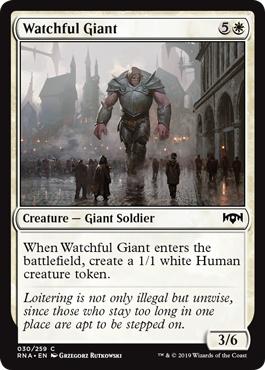
That haziness is used to great effect in the autumn setting of Ravnica, where details in the distance can’t be easily seen or observed. Fog, rain and gloomy skies are prevalent throughout the art of Ravnica, including every basic land across the two newest sets. Not even the strongest rays of sunlight can fully pierce this misty covering, so who knows what might be going on in the distance. Or who might be watching you.
Chiaroscuro – Bright Light vs. Deep Darkness
Another hallmark of Film Noir is its use of high-contrast lighting. Also known as chiaroscuro, this three-point lighting technique adds volume to a setting by creating defined, almost black shadows with brighter lit areas for contrast. While highlighting the features of actors and characters, chiaroscuro also symbolizes the contrast between the dark of the environment and the lighter good in human nature.
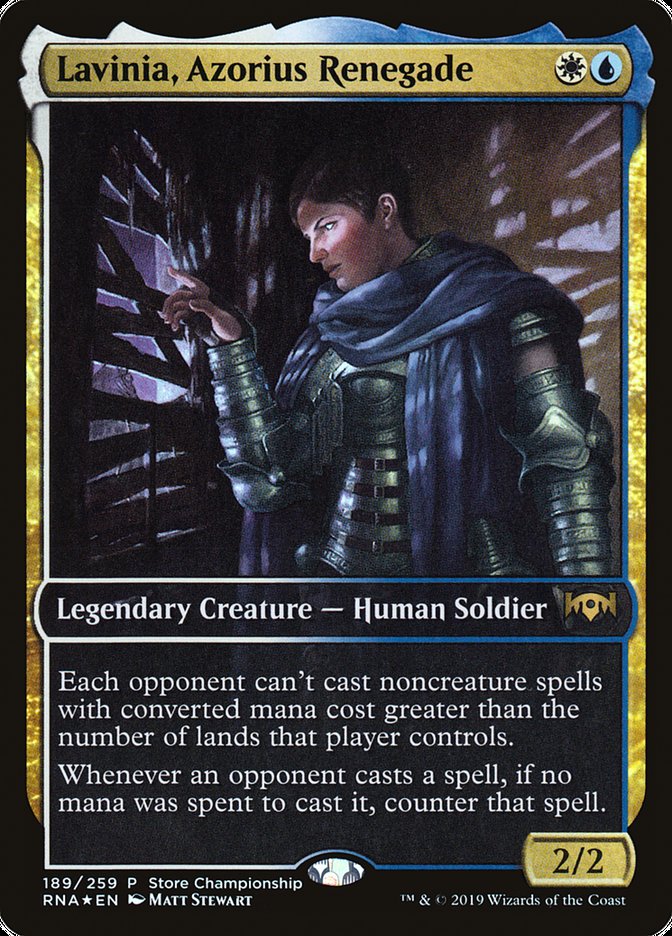
We can see this technique clearly in the “Venetian blind” lighting of “Expose to Daylight,” the promotional art of “Lavinia, Azorius Renegade,” and “Thought Erasure.” With the slats of wood or bars covering the source of light, the subjects of these pieces are partially obscured in shadowed lines. Both revealed and hidden, these shadows lend the subjects an air of mystery while echoing the lines of prison bars. This visual motif is usually replicated indoors, underlining the theme of confinement that living in a large city can bring.
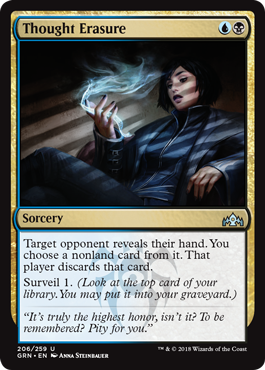
(By the way, the figure in “Expose to Daylight” is absolutely a “Maltese Falcon” reference.)
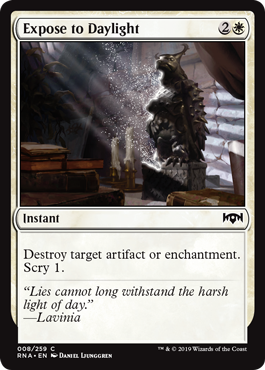
High-contrast lighting can also be found in other pieces. Lit from beneath, the Darkblade Agent’s features can be made out in relief against the mural. However, the delineated shadows made by her arm obscure the bottom half of her face, hiding her identity.
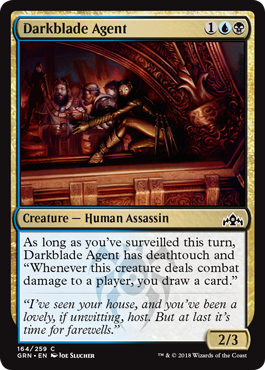
In High Alert, the bright blue searchlights above the justiciars cast their black silhouettes on the ground as they start their search. The intense light aimed directly at the viewer combined with the dark shadows of this scene is disorienting. We can barely make out the faces of the backlit Azorius justiciars looking out at us, blinded by the light. It’s a reminder that, though the darkness of human nature can be frightening, being exposed to the harsh judgement of light can be just as terrible.
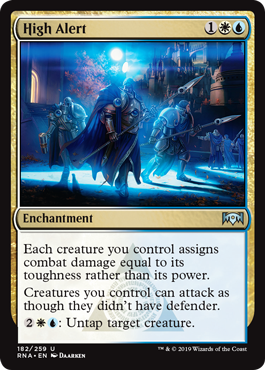
Illusion and Paranoia
With so much of Film Noir influenced by the social anxiety of World War II and the Cold War, it’s only inevitable that this mood is reflected in the genre’s visuals. Not knowing whom to trust or what decision to make, characters are ruled by confusion and fear. This makes its way to the denizens of Ravnica, who are suddenly plagued by a deeper sense of paranoia.
“Eyes Everywhere” is an Expressionist interpretation of the internal fear that the main subject feels. Around him, illusions of grotesque eyes peer at him, tentacles writhing in and out of focus.
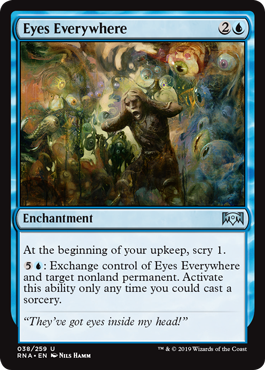
The same sense of visual discomfort is seen in “Mirror March.” The subject’s arm, taken from our perspective, reaches out to touch a mirror as his red-lined reflections stretch to infinity, lips parted in shock. In both pieces, a surrealist mood suffuses the art and emphasizes how wrong the situation is.
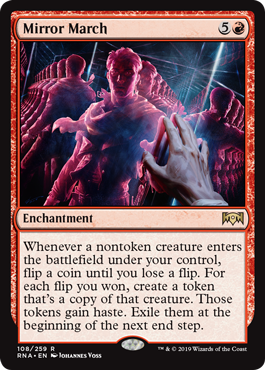
This strange, sinister feeling also comes through in “Mass Manipulation”, where shadowy figures stare at the viewer, controlled by mysterious bright blue vapor.
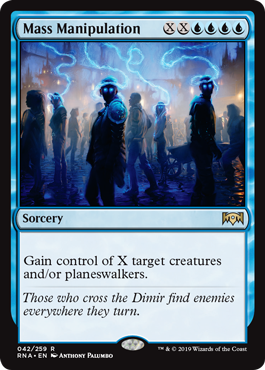
This sense of horror also enters the mundane, outside world for Ravnica. “Creeping Chill” shows a man walking into an alley, glancing furtively behind him as he brings up his hood. Following him, the shadow outlined in the sun is a mysterious, insectoid figure with long, spindly legs.
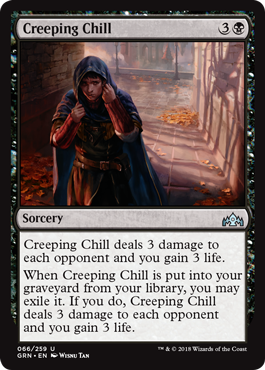
Figures whispering to one another add to the atmosphere of paranoia in “Disinformation Campaign,” adding to the feeling of uncertainty as rumors fly from ear to ear. Ravnica and its citizens are in a state of fear as Bolas prepares to overtake the plane.
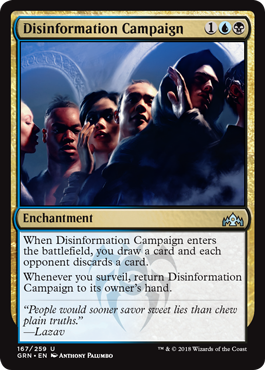
Costume
The most obvious influence that Film Noir has had on Ravnica is in its citizens’ fashion. The early-to-mid-20th-century aesthetic of Film Noir gave it a classic, iconic look, incorporating trench coats, fedoras and cigarettes into the cultural lexicon. The Dimir, ever interested in the exchange of information on the plane, become the natural investigators we’re accustomed to seeing in a Film Noir. Though they’re not as interested in the moral ambiguities of their findings, they do their best to unearth the reasons behind some of the other guilds’ mysterious behavior.
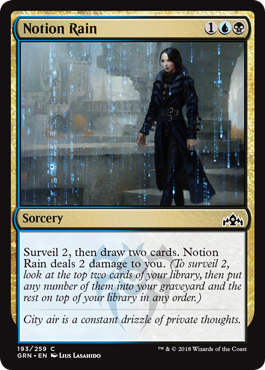
We can see this influence clearly in the large, layered lapels, fingerless gloves and dark overcoats of the Dimir agents. “Notion Rain” gives us a gorgeous full look at an agent’s outfit. From her belted trench coat, sleeves and black trousers, this agent walks through a rain of bright blue thoughts raining from the over cast, foggy sky.
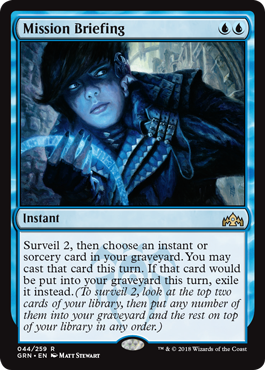
In “Mission Briefing”, another agent listens for further instructions from her earpiece as she examines a glowing thought strand in her hand, hiding in a rundown alley. The trench coats also adorn the agent in “Devious Cover-Up” and “Enhanced Surveillance”, the latter also lurking in the shadows of a bridge like a hard-boiled detective.
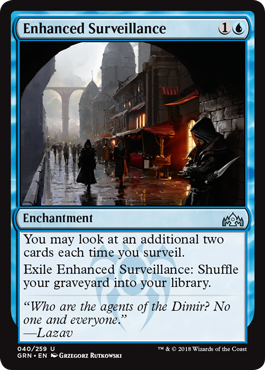
Conclusion
Ravnica is one of Magic’s most popular planes because it resonates with us on many different levels. While we often entertain our desires for fighting and conflict with this game, it’s also refreshing to see the darker, deeper themes of a cultural genre we love like Film Noir represented here. With War of the Spark looming on the horizon, we’ll soon see how the tension in this world breaks, and how Bolas will wreak his plans for ultimate power upon a somewhat-suspecting world.
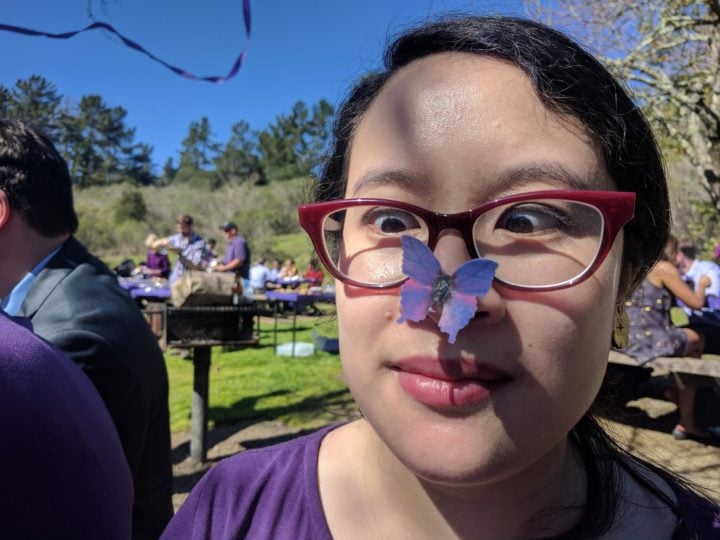
A consummate lover of books, tea, food and instant-speed kill spells, Michelle is a person of many passions. Her hobbies include cuddling cats, throwing pottery, and analyzing Magic lore from a literary perspective. She is also a co-host of the Vorthos comedy podcast, “The Loregoyfs,” and she comprises a full 25% of The Felidar Guardian (specifically the right hand, left ear and both scapulas). Her CMC is 2BWU, and her ETB trigger creates two 1/1 cats with lifelink and trample.

